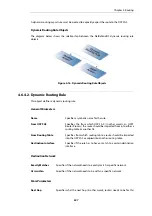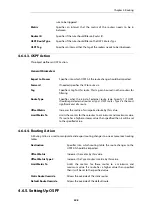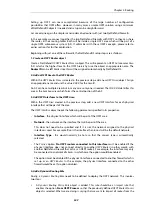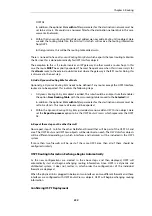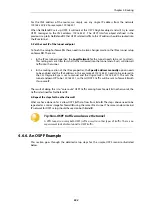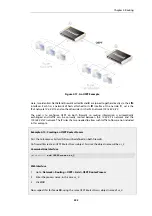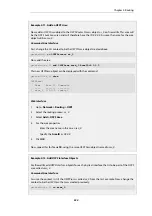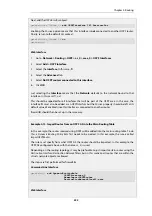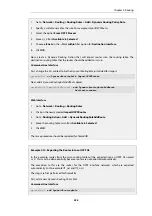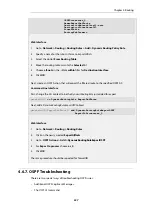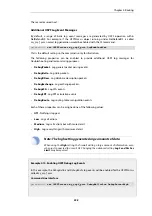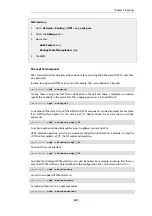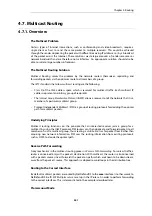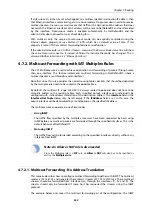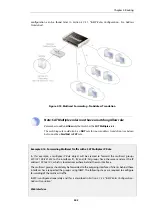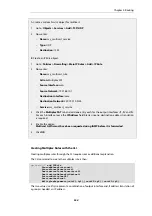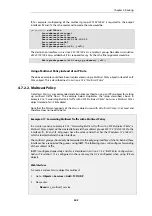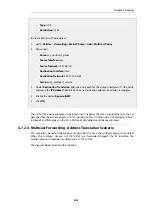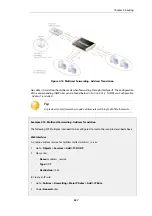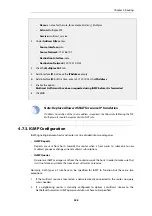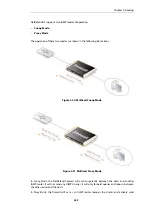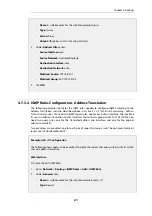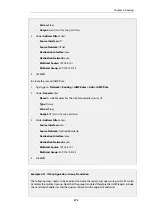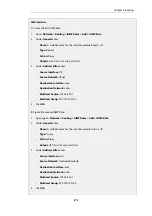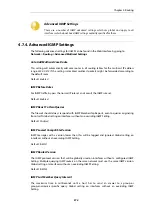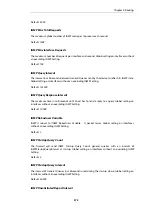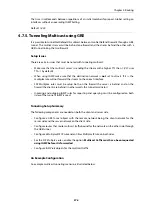
4.7. Multicast Routing
4.7.1. Overview
The Multicast Problem
Certain types of Internet interactions, such as conferencing and video broadcasts, require a
single client or host to send the same packet to multiple receivers. This could be achieved
through the sender duplicating the packet with different receiving IP addresses or by a broadcast
of the packet across the Internet. These solutions waste large amounts of sender resources or
network bandwidth and are therefore not satisfactory. An appropriate solution should also be
able to scale to large numbers of receivers.
The Multicast Routing Solution
Multicast Routing solves the problem by the network routers themselves, replicating and
forwarding packets via the optimum route to all members of a group.
The IETF standards that allow multicast routing are the following:
•
Class D of the IPv4 address space which is reserved for multicast traffic. Each multicast IP
address represent an arbitrary group of recipients.
•
The
Internet Group Membership Protocol
(IGMP) allows a receiver to tell the network that it is a
member of a particular multicast group.
•
Protocol Independent Multicast (PIM) is a group of routing protocols for deciding the optimal
path for multicast packets.
Underlying Principles
Multicast routing functions on the principle that an interested receiver joins a group for a
multicast by using the IGMP protocol. PIM routers can then duplicate and forward packets to all
members of such a multicast group, thus creating a
distribution tree
for packet flow. Rather than
acquiring new network information, PIM uses the routing information from existing protocols,
such as OSPF, to decide the optimal path.
Reverse Path Forwarding
A key mechanism in the multicast routing process is
Reverse Path Forwarding
. For unicast traffic, a
router is concerned only with a packet's destination. With multicast, the router is also concerned
with a packets source since it forwards the packet on paths which are known to be downstream,
away from the packet's source. This approach is adopted to avoid loops in the distribution tree.
Routing to the Correct Interface
By default, multicast packets are routed by NetDefendOS to the core interface (in other words, to
NetDefendOS itself ).
SAT Multiplex rules
are set up in the IP rule set in order to perform forwarding
to the correct interfaces. This is demonstrated in the examples described later.
Promiscuous Mode
Chapter 4: Routing
361
Summary of Contents for NetDefendOS
Page 30: ...Figure 1 3 Packet Flow Schematic Part III Chapter 1 NetDefendOS Overview 30 ...
Page 32: ...Chapter 1 NetDefendOS Overview 32 ...
Page 144: ...Chapter 2 Management and Maintenance 144 ...
Page 284: ...Chapter 3 Fundamentals 284 ...
Page 392: ...Chapter 4 Routing 392 ...
Page 419: ... Host 2001 DB8 1 MAC 00 90 12 13 14 15 5 Click OK Chapter 5 DHCP Services 419 ...
Page 420: ...Chapter 5 DHCP Services 420 ...
Page 573: ...Chapter 6 Security Mechanisms 573 ...
Page 607: ...Chapter 7 Address Translation 607 ...
Page 666: ...Chapter 8 User Authentication 666 ...
Page 775: ...Chapter 9 VPN 775 ...
Page 819: ...Chapter 10 Traffic Management 819 ...
Page 842: ...Chapter 11 High Availability 842 ...
Page 866: ...Default Enabled Chapter 13 Advanced Settings 866 ...
Page 879: ...Chapter 13 Advanced Settings 879 ...

